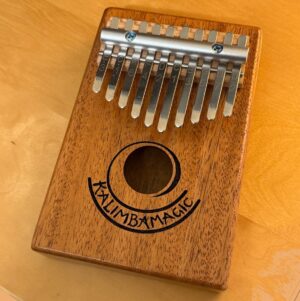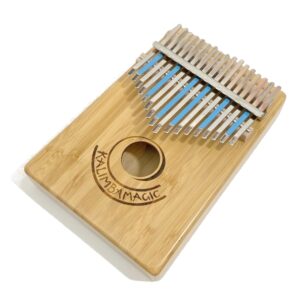
TIP: A Karimba Improvisational Strategy Part 9
A left thumb suggestion A suggestion for a left thumb part The goal here is for you to play the right thumb’s two-note chord part more or less as written, and to invent your own left thumb part. You may have already been successful with this, or you might feel you have no clue of what to do. If the latter is true, here is a left thumb suggestion for you. Notice how the left thumb and right thumb do not overlap. The left thumb plays the same part in measures 1, 2, and 3. In going from the high E to the middle A on the left side, you





